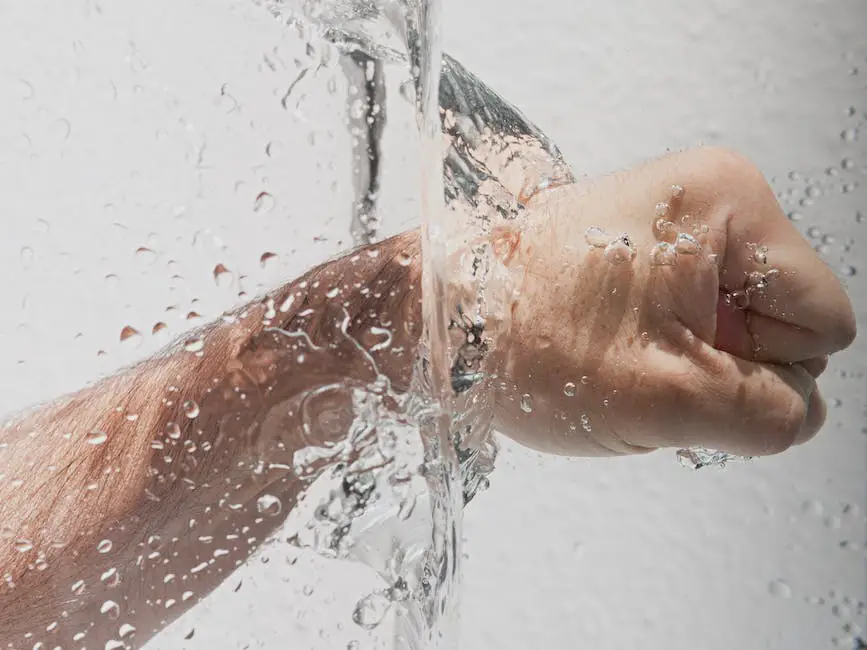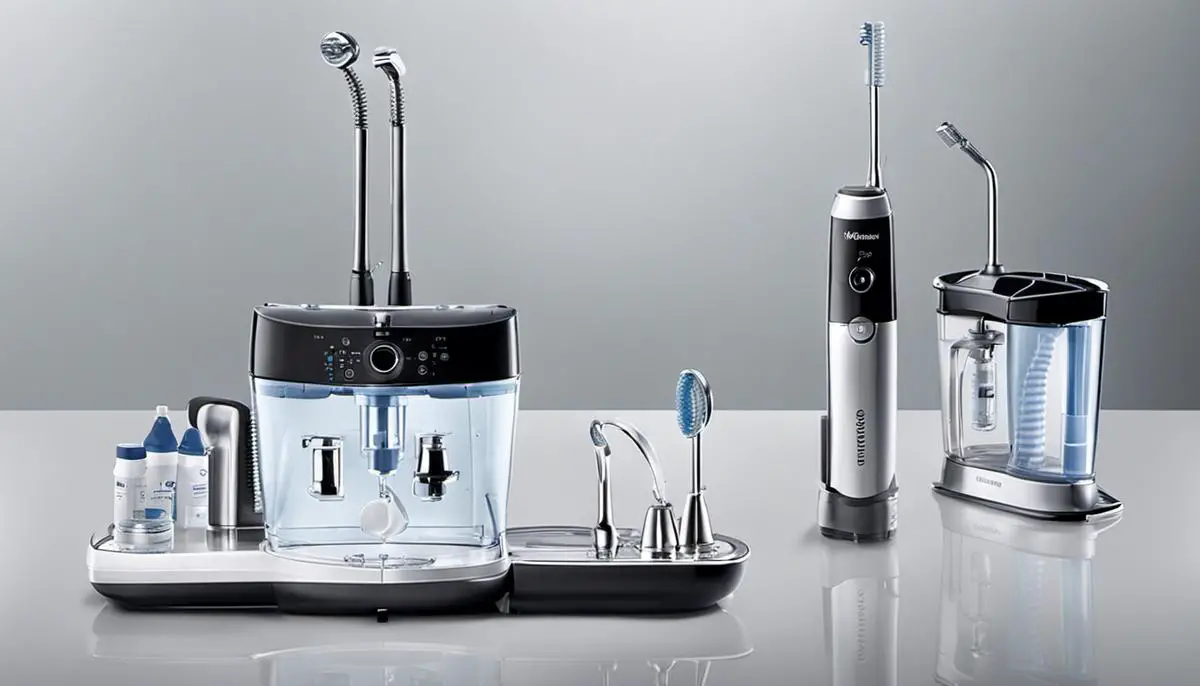Maintaining oral health is paramount, and Waterpik Water Flossers have proven to be an effective tool in achieving this. However, to ensure the longevity of these devices, proper care and understanding of its structure, including essential parts like the reservoir, is crucial. This involves clearly comprehending how to dismantle and reassemble your flosser appropriately. Our focus in this read is to provide you with a detailed guide on how to safely remove and reattach the reservoir on your Waterpik Water Flosser, giving you practical steps to follow for successful handling of your device.
Understanding your Waterpik Water Flosser
The Core Components and Functions of a Waterpik Water Flosser
The constant evolution in tech trends has massively revolutionized our world from big things like space exploration right down to monitoring our oral health. Today, we delve into the ingenious technology behind the Waterpik Water Flosser – a remarkable invention in the dentistry world.
Waterpik Water Flosser Uses
This modern gadget has taken oral hygiene routines by storm, whether you’re a tech-savvy fresh breath enthusiast or just looking to keep your dentist happy. The Waterpik Water Flosser works by utilizing a motor and pump that creates a stream of pressurized, pulsating water. This water stream seamlessly cleans between teeth and below the gumline, where traditional brushing and flossing can’t reach.
Key Components of a Waterpik Water Flosser
The main components of a Waterpik Water Flosser are broken down as follows:
- Reservoir: The tank-like component holds water for the flosser. It’s designed with a lid on the top where one fills it with warm water before use. The capacity differs depending on the Waterpik model and can hold sufficient water for a full-fledged flossing session.
- Pump and Motor: The heart of a Waterpik Water Flosser. They work together to pressurize and push the water up from the reservoir and through the flosser tip.
- Timer/Pacer: Like the pacing feature on high-tech treadmills, most water flossers include a timer/pacer. It ensures that sufficient time is spent flossing by signalling at 30-second intervals to switch to a different mouth section.
- Handle: This handheld component with a pause button allows one to interrupt the water flow without turning off the motor – all for your convenience and ease of use.
- Tip: Delivers the water pressure where it’s needed – between the teeth and gumline. Some models come with specific tips for implants, orthodontics, and plaques, offering versatility for different dental needs.
Final Considerations
The effectiveness of technology is often measured by its real-world implications. In this case, the Waterpik Water Flosser has proven to be a key player in fostering excellent oral health, confirmed by numerous clinical studies. From its impressive array of features to its user-friendly design, this hi-tech oral hygiene gadget caters to different kinds of dental needs and preferences.
While its functions may seem complex, don’t be intimidated; this is an excellent example of how advanced technology can be both practical and user-friendly. A bit of practice makes perfect, and soon, using a Waterpik Water Flosser will feel as natural as brushing your teeth. So embrace this beneficial technology and let your smile shine brighter, one pulsating water pressing at a time.

The Removal Process
The Steps to Correctly Remove the Reservoir from a Waterpik Water Flosser
To maximize the value from modern oral care technology such as the Waterpik Water Flosser, it’s essential to understand its components and their maintenance, including the reservoir. This component is particularly crucial as it holds the water required for the flossing process. At times, it might be necessary to remove this reservoir, perhaps for cleaning purposes or necessary maintenance. Here are the accurate steps to perform this task efficiently:
- Unplug the Waterpik Water Flosser: Safety is the first priority when dealing with any electrical device. Always ensure that the water flosser is disconnected from the power supply before performing any maintenance tasks, including reservoir removal.
- Locate the Reservoir: The reservoir is typically the largest component of the Waterpik Water Flosser, situated at the top and back of the device.
- Release the Reservoir: On various models, there’s typically a release button or a lever located near or on the reservoir, which, when pressed or turned, allows for the release and removal of the reservoir.
- Lift the Reservoir: After releasing the reservoir, gently lift it away from the main body of the water flosser. It should come away easily. If resistance is experienced, double-check that the release mechanism has been properly engaged and try again.
- Avoid Spillage: When removing the reservoir, be mindful that it could still be holding water. To avoid spillages, ensure it’s emptied before removal or carefully tip out any remaining water after detaching it from the flosser body.
In understanding the mechanics and operation of the Waterpik Water Flosser, including reservoir removal, users can obtain the most out of this groundbreaking technology. Not only does the flosser facilitate superior oral health, successful operation ensures it remains an efficient and user-friendly option for those who opt for this advanced approach to dental care. Meticulously maintaining and operating the device can make flossing a breeze and aid users to remain at the forefront of personal oral care technology.

Photo by redzeppelin on Unsplash
Reassembly after Removal
Having addressed all basic functionalities and components of the Waterpik Water Flosser, let’s cut to the chase and delve into the correct reassembly process post-reservoir removal. Proper upkeep ensures prolonged usage and optimum performance of this dental device. Seriously, maintaining your Waterpik Water Flosser is as important as utilizing it regularly. So let’s dive in.
Step 1:
Locate the empty reservoir and make sure it’s clean and dry. Regular cleaning is crucial to prevent any buildup. This ensures that only pure water reaches your teeth and gums.
Step 2:
Match the reservoir with the base from where it was taken. Allow no room for doubt here, as both the components are designed to fit each other perfectly. They should seamlessly fit without requiring any significant pressure.
Step 3:
Carefully align the reservoir with the base of the Waterpik Water Flosser and gently place it back. Ensure the reservoir sits securely and evenly on the water flosser base. An uneven seating can cause leakage, leading to lesser pressure during operation, reducing the device’s efficacy.
Step 4:
Locate the locking mechanism on your model. It could be a release button, lever, or a latch. Whichever model you have, make sure to secure the water reservoir back in its place by using this locking mechanism.
Step 5:
Keep an eye on the seal between the reservoir and the base. After securing, make sure there’s no gap between the reservoir and the base unit. This seal is crucial as it prevents water leakage, ensuring full water pressure directed to your teeth for effective flossing.
Step 6:
Once you have secured the reservoir back in its place, it’s time to refill it with warm water. But make sure you do so only up to the marked limit. Overfilling can cause spillage and seepage into the electronic components.
Step 7:
Now, choose the exact Waterpik tip for your requirements and insert it securely into the handle. Each type of tip is designed to address different oral concerns, so choose wisely to reap the maximum benefits.
Step 8:
finally, plug your device back into the power socket. Remember, the whole reservoir removal and reassembly process should be performed with the device unplugged, minimising any electric shock risk.
Routinely disassembling and reassembling your Waterpik Water Flosser may seem like a bit of a chore. But as tech devotees know, a little regular maintenance can go a long way in ensuring optimal performance. In this case, that comes in the form of powerful, effective water flossing that keeps your mouth in top shape. Now that’s something to smile about.

Proper care and maintenance of your Waterpik Water Flosser is not just about prolonging its lifespan, it’s about ensuring its efficiency in maintaining your dental health too. Once you know how to appropriately remove and reattach your water flosser’s reservoir, your overall device maintenance skill improves. Remember to always handle your device with care, observing safety precautions during dismantling and reassembly. This way, you get to keep your flosser in optimal working condition, promoting impressive oral health results every time you use it.








